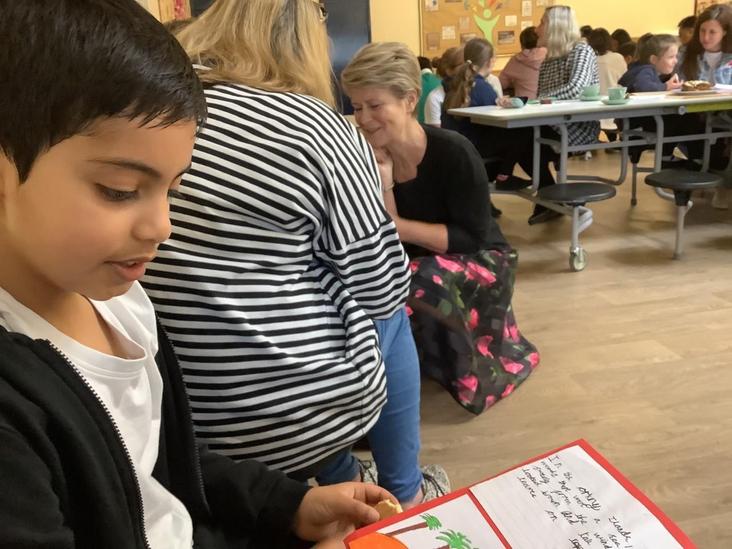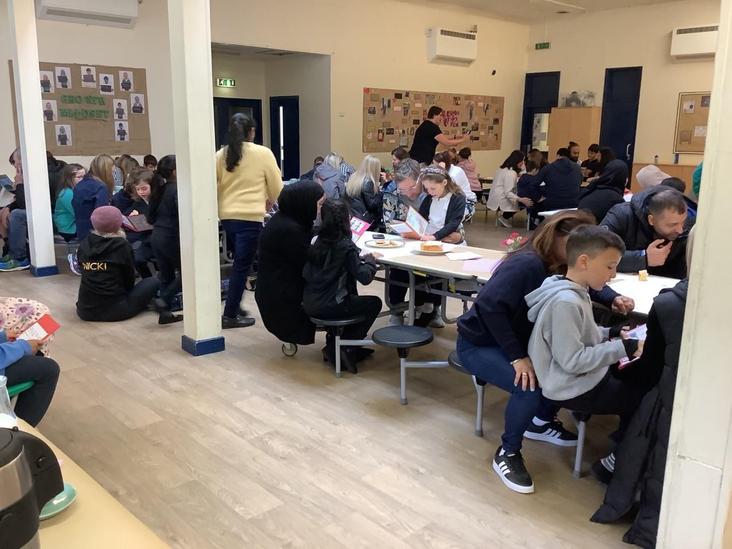Writing
Writing
During the writing phase of the Literacy unit, the four purposes of writing - writing to inform, to entertain, to persuade and to discuss - are developed and prior learning is built on.
These skills are planned for progressively from Year 1 - Year 6. In KS1, children write to inform or entertain, writing letters, short stories, information and explanation texts. By Lower KS2, there is progression in these skills and writing to persuade is introduced. By Upper KS2, children are also taught to write to discuss, in discussion texts, balanced arguments and newspaper articles. These are outlined in the overview document for Progression of Skills in Writing document.
For the Writing focus part of the Literacy unit, the studied text might not be same genre as the intended writing outcome. In those cases, WAGOLLs (model texts) are used to identify successful features for the children to use in their own writing. The writing process then begins with identifying a purpose and audience for their writing (for example a persuasive letter to a company or famous person, a magical story for adults, a diary entry, an informative leaflet for tourists), then opportunity to identify success criteria and key features to include for a successful text. After that, children practise the skills of writing different aspects of features and work on next steps. Children then plan, draft, edit and redraft their own piece of writing, before publishing for a real purpose. Manor Wood children consider themselves real authors; they write for parents and publish online, they write and post real letters to inform or persuade, they draft, illustrate and publish real books to share with their younger Reading Buddies in school, or to read to parents at special coffee mornings, and they even send their final novels to another school for feedback from children of the same age. As we value Drama highly, children also perform some of their final pieces such as poetry, television shows scripts, or persuasive or informative texts aimed at a live audience or to be shared on Seesaw.
Publishing for a purpose - Year 3 coffee morning share a book
|
|
|
Spelling and handwriting
In KS1, the teaching of spelling is an extension of the phonics teaching sequence and consolidates and practises the GPCs and CEWs children have been taught so far. In KS2, spelling is taught as a weekly lesson and is planned carefully to build on prior knowledge, using the spelling conventions, prefixes, suffixes and spelling rules set out in the National Curriculum. Teaching uses root word exploration, word maps, etymological approaches and helps to develop vocabulary as words are taught in context with work around meaning and definitions. A weekly spelling test allows children to assess their own misconceptions with certain words, rules, suffixes and prefixes and to help move learning on. Children have access to dictionaries in lessons where writing takes place so that they can edit and correct spelling mistakes themselves.
As a school, we use Letter-join for the teaching of handwriting. While children are still learning phonemes and graphemes, letter formation is taught as part of the phonics lesson and practised and consolidated in writing across the wider curriculum. At this stage, the letter formation is non-cursive (printed and not joined) as it is more suitable for small, still-developing hands and is a closer reflection of the letter formation seen in their reading books at this stage. When children are in Year 2 and/or secure in printed letter formation, we begin to teach the leading strokes for each letter and this then progresses across school into joined, cursive handwriting, following the Letter-join planning in our weekly handwriting lessons which ensures week by week progression. Children can access letter-join at home to practise and access the handwriting games: check Seesaw for the link or ask your child’s teacher for the login and password.
Get In Touch
- Carr Manor Road,
Leeds,
LS17 5DJ - 0113 268 9160
- office@manorwood.owlcotesmat.org



